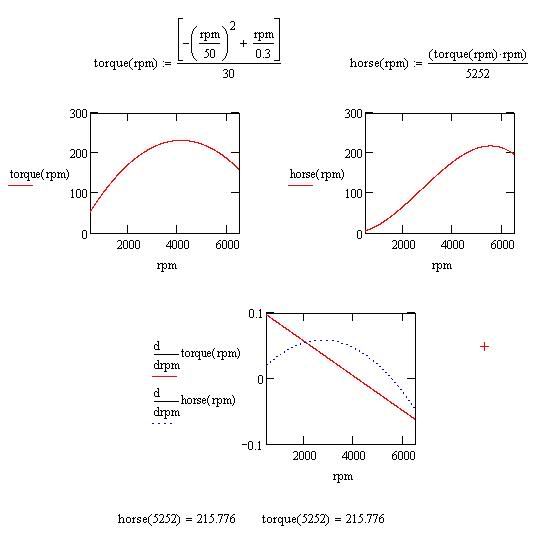First, that math depends on what units you measure in. Nm != ft-lb
The point of the math is not about the magic number 5252, but more that HP is simply derived from torquexRPM. If you have a high revving motor, as long as torque isn't falling off extremely rapidly you'll get high RPM horsepower peaks. The higher they extend the redline, the more HP they can put in the brochure.
To put it another way, if you have a perfectly flat torque curve, you will get a constantly increasing HP line (to infinity) at a slope related to 5252. Generally torque curves aren't flat, and roll off at high and low RPMs. When the torque falls off faster than the RPM is rising, the HP curve falls too, giving you your HP peak at some RPM that's beyond the useful torque range of your engine.
Torque is the twisting force that moves the vehicle - period. Your 1.6L engine is designed with a roll off above 4000rpm. There's nothing wrong with your butt dyno. Where's the advertised torque peak on your engine? Plan your shift points to straddle your torque peak. Let's just say your gear-to-gear ratios work out nicely. If your torque peak was at 3500rpm and your revs fall around 700rpm per shift at ~4000 (the gap changes with engine RPM since it's a linear function starting at 0). I would probably shift at 3600-3700rpm just past the torque peak, and letting the revs then fall to 3300-3400 in the next gear, just below the torque peak. You will sweep right through your torque peak before the next shift.
If your gear gap is 1000rpm, shift at 4000 so each gear sweeps 3000-4000rpm right through the torque peak.
If your torque production isn't equally distributed above and below the peak, favour the lopsided side of the peak with more torque. So if you have building torque to 3500 and hit a brick wall and have 500 rpm gear spacing, run from 3100-3600rpm in each gear while accelerating.
It's useful to obtain torque and HP graphs for your vehicle, not just the peak numbers.
Again, cruising is a different animal. Go for top gear economy without lugging.
Take a look at
engine and
transmission graphs for a car I used to own. The torque peak was at 4100rpm and there was torque pretty much everywhere. The HP curve is a virtually a slanted line because of the flat torque. Brisk driving can be "planned" by combining the torque curves and transmission diagrams to straddle the torque peak.
Not a lot of time to write this, sorry for bad grammar or mistakes.



